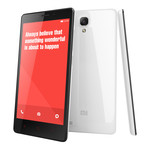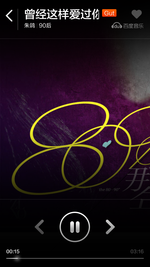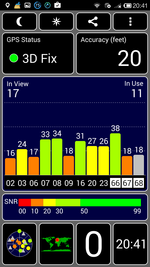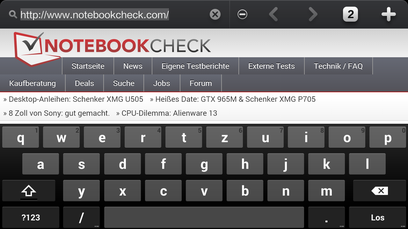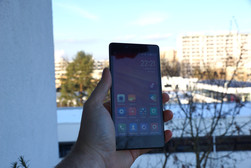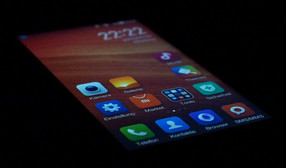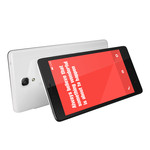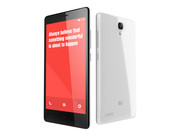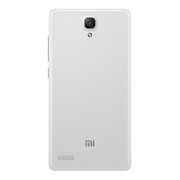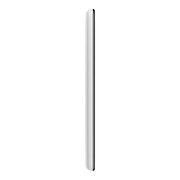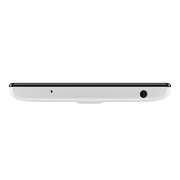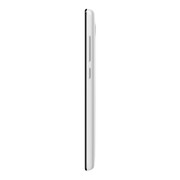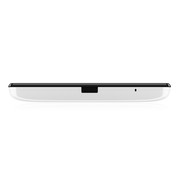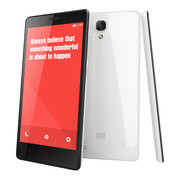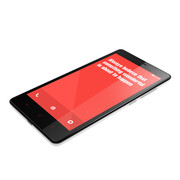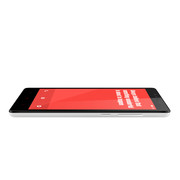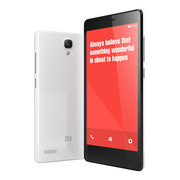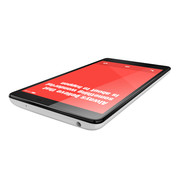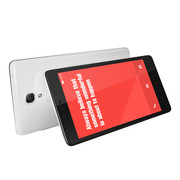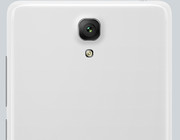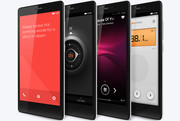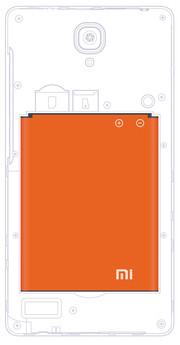Xiaomi Redmi Note 4G Smartphone Review

For the original German review, see here.
As of yet, Xiaomi has mostly made it into Western headlines on account of its unbelievably explosive growth rate, especially in China. The manufacturer of smartphones and tablets has quickly relegated the foreign competition like Apple and Google to positions in the shade. Furthermore, the corporation has become one of the most highly rated private technology companies in the world. Its CEO, Lei Jun, is a bit of an eccentric who enjoys acting like a copy of Steve Jobs and has rather an Apple-esque way of presenting products. On top of that you've got the name Xiaomi, which translated means "millet"...
Nevertheless, the company's success in China in particular piques the curiosity of some Western customers, especially given that our test device, the Redmi Note 4G, costs under 200 Euros (~$227) -- a very low price for a phablet. But there is one big hurdle to jump: Most Xiaomi devices can only be directly imported from China, which involves value-added tax, shipping and customs costs, all of which increase and complicate the price. Retailers like http://www.lenteen.de help here -- this website courteously lent us our test device. Now we just need to sort out whether the Xiaomi Redmi Note 4G holds up to the quality standards of phablets manufactured (...in Asia) by other companies, such as Apple, Huawei, Acer, Nokia, Samsung and Google.
Case
The Redmi Note 4G's outer shell is characterized by very simple plastic surfaces that prove to be stable on the whole. Strong pressure applied to the back of the device is visible on the screen, and if the smartphone is bent in the middle, the back side detaches slightly, but that is mostly due to the fact that the back side is removable. The Xiaomi Redmi Note 4G has a removable battery and a microSD slot, both of which are hidden alongside the SIM slot on the back side of the device. It's worth noting, however, that it takes a lot of strength to remove the back cover.
The Xiaomi phablet only comes with a black front and white back; there are no other color options. The touch buttons under the display are marked in red and provide the phone's case with a touch of color. The back side is glossy, so fingerprints and smudges are immediately visible, but it's grippy enough that the phablet doesn't easily fall out of your hand. The smartphone's case is designed for maximum functionality rather than flashy looks.
When it comes to thickness, the Redmi Note 4G can't keep up with its rivals. Almost every competing device is thinner. Only the Google Nexus 6 is at 10 mm (~0.4 inches) somewhat thicker, but the Nexus' curved back side makes it appear thinner.
Connectivity
Software
In terms of software, users of this phablet will have to be content with a somewhat older operating system: Android 4.2 Jelly Bean as a base is rather outdated at this point, given that the current version is Android 5.0.1. Some Android 5.0 functions are unavailable on this lower platform, for example standard memory encryption and battery-saver mode. In exchange, Xiaomi provides their own MIUI 5 user interface, which makes changes to the phone's graphics. The options, for example, are somewhat more clearly arranged.
There are a few overhauled and additional apps, including a new music player. Contrary to various articles on the Internet that report otherwise, Xiaomi's music player worked well, even in standby mode. The Baidu Music streaming box is definitely tailored to Chinese users, but the current Billboard charts are available on the app, among other things. The DU Speed Booster is a more practical piece of software -- on request, the program can prolong the phone's battery life or free up storage space on the smartphone.
If you're concerned about data security, it might be best to turn off the integrated MiCloud cloud service; the data is saved on servers in China. But according to the manufacturer, the smartphone doesn't send any user data like phone connections or similar information to the manufacturer -- at least not without the user's permission. By the way, instead of Xiaomi's app shop, it's possible to use the official Google Play Store.
Communication & GPS
Now let's take a look at the aGPS module, which also connects to the GLONASS network. It can't discover its location indoors, but outdoors it quickly finds its position and is accurate to 7 meters.
The WLAN module also provides very fast connections according to the 802.11 ac standard and can transmit over both the 2.4 GHz and 5 GHz bands. The connection quality is fairly good: Even ten meters from the router and through three walls, the module still picks up three-quarters of the signal and websites load quickly. Xiaomi also installed Bluetooth 4.0 LE in the device.
The smartphone cooperates with every current type of cell phone network: 2G, 3G and even the quick 4G are no problem for the device. The range of supported networks isn't enormous but should be sufficient for most users: The phone supports four frequencies each in the GPRS and UMTS networks, as well as three LTE frequencies. Unfortunately, LTE isn't yet widely available on the German E-Plus network, so we were only able to test the device's UMTS reception. We were happy with the results: In the city, we usually had four or five bars.
Telephone & Speech Quality
The telephone app is basically just the standard Android app and is clearly organized and very intuitive. When it comes to speech quality, we were happy with the Xiaomi Redmi Note 4G: Every once in a while our conversation partner reported a soft rustling from the microphone, but otherwise our voice came across very clearly. We also heard our conversation partner very clearly. The speakerphone also functioned well; it reproduced our partner's speech cleanly and we were easy to understand as well.
Cameras & Multimedia
With a 13-megapixel back camera and 5-megapixel front camera, the Xiaomi Redmi Note 4G has no reason to fear the competition. On the contrary: Purely on the basis of its pixel count, the smartphone surpasses considerably more expensive devices like the Nexus 6. The back camera also has an LED flash and auto-focus on board. All these features combined make for good pictures, though at larger sizes it's clear that the images lack crisp details compared to the more expensive smartphone competitors. The front camera has a fairly wide angle lens and takes good selfies that look respectable even at somewhat larger sizes. All in all, the Xiaomi Redmi Note 4G's cameras aren't top-of-the-line, but they can certainly keep up with modules on more expensive devices.
Warranty
In terms of warranty, it's better to depend on the retailer warranty, as Xiaomi has neither an official branch in Europe nor an importer that would provide a manufacturer warranty. In the case of a warranty claim, it may be that the device will need to be shipped to China and the buyer will have to cover the shipping costs.
Input Devices & Operation
The touchscreen functions reliably, even in the corners. The keyboard is the standard, clearly organized Android model. Experienced typists will be able to write quickly on this keyboard. The phone offers word suggestions, and it's possible to swipe across the keyboard without picking up your finger between each key. Regrettably, the voice assistant is only available in Mandarin.
Display
A resolution of 1280x720 pixels on a phablet isn't in keeping with the times; all the Xiaomi device's competitors now offer Full HD or higher. Still, the Chinese manufacturer installed an IPS display that glows at a reasonably bright 417.7 cd/m², and at an 87% degree of similarity across the screen, the brightness distribution is quite uniform. In practice, at times the medium brightness and low resolution is certainly noticeable, but tolerable.
| |||||||||||||||||||||||||
Brightness Distribution: 87 %
Center on Battery: 446 cd/m²
Contrast: 949:1 (Black: 0.47 cd/m²)
ΔE ColorChecker Calman: 5.1 | ∀{0.5-29.43 Ø4.77}
ΔE Greyscale Calman: 5.93 | ∀{0.09-98 Ø5}
Gamma: 3.46
CCT: 7350 K
| Xiaomi Redmi Note 4G Adreno 305, 400 MSM8928, 8 GB eMMC Flash | Apple iPhone 6 Plus PowerVR GX6450, A8, 64 GB eMMC Flash | Google Nexus 6 Adreno 420, 805 APQ8084, 32 GB eMMC Flash | Huawei Ascend Mate 7 Mali-T628 MP6, Kirin 925, 16 GB eMMC Flash | Acer Liquid S2 Adreno 330, 800 MSM8974, 16 GB eMMC Flash | Nokia Lumia 1520 Adreno 330, 800 MSM8974, 32 GB eMMC Flash | |
|---|---|---|---|---|---|---|
| Screen | 8% | -16% | 18% | 27% | 11% | |
| Brightness middle (cd/m²) | 446 | 519 16% | 274 -39% | 451 1% | 435 -2% | 421 -6% |
| Brightness (cd/m²) | 418 | 496 19% | 264 -37% | 455 9% | 406 -3% | 399 -5% |
| Brightness Distribution (%) | 87 | 90 3% | 89 2% | 93 7% | 88 1% | 86 -1% |
| Black Level * (cd/m²) | 0.47 | 0.62 -32% | 0.46 2% | 0.25 47% | 0.48 -2% | |
| Contrast (:1) | 949 | 837 -12% | 980 3% | 1740 83% | 877 -8% | |
| Colorchecker dE 2000 * | 5.1 | 3.67 28% | 6.99 -37% | 2.49 51% | 3.59 30% | 3.28 36% |
| Greyscale dE 2000 * | 5.93 | 3.78 36% | 4.01 32% | 2.88 51% | 3.83 35% | 2.28 62% |
| Gamma | 3.46 64% | 2.42 91% | 2.03 108% | 2.61 84% | 2.5 88% | |
| CCT | 7350 88% | 7327 89% | 6329 103% | 6491 100% | 6936 94% |
* ... smaller is better
In terms of the display's black value and contrast, the Xiaomi Redmi Note 4G's screen falls in between the rest of the competitors and even beats the Apple iPhone 6 Plus' Retina display. In everyday use, the screen's contrast looks very rich, but the colors are slightly muted.
In order to get a more exact impression of a device's color reproduction, we use the CalMAN software and a photospectrometer. The phablet's results reveal a very slight blue cast, and sure enough, the colors are a bit muted in comparison to the sRGB reference color space. Overall, compared to its competitors, the display's DeltaE 2000 values deviate considerably further from the ideal values.
Outdoors, it's certainly possible to work with the Xiaomi Redmi Note 4G, but the highly reflective screen surface makes it difficult to see the screen content in bright environments. The contrast is strong enough that in the shadows or indoors the screen content is easily visible, even when light from a window or lamp is reflected on the display.
Performance
The Xiaomi Redmi Note 4G's competitive price is most reflected in its weak SoC: The processor is a Qualcomm Snapdragon 400 MSM8928 that has four cores and clocks at up to 1.6 GHz. The SoC already has one-and-a-half years under its belt, and even then it was intended more for entry-level devices. Still, we didn't experience any lags or long load times in the MIUI interface. Most of the apps we tried out were free of performance problems as well. However, the fact that the SoC is on the slow end is certainly noticeable when multitasking: If you're listening to background music, even simple apps load considerably slower.
The difference in speed is clear in our benchmarks as well: In Geekbench, our test device comes in substantially behind its competitors. Surfing over the web goes considerably slower too, even in the browser Xiaomi programmed themselves. The Adreno 305 graphics unit struggles just as much to keep the competing devices in its line of vision. At 8 GB, the phablet's storage space is small, but at least in terms of speed it can keep up with its rivals.
| Geekbench 3 | |
| 32 Bit Single-Core Score (sort by value) | |
| Xiaomi Redmi Note 4G | |
| Apple iPhone 6 Plus | |
| Google Nexus 6 | |
| Huawei Ascend Mate 7 | |
| Acer Liquid S2 | |
| Samsung Galaxy Note 4 | |
| 32 Bit Multi-Core Score (sort by value) | |
| Xiaomi Redmi Note 4G | |
| Apple iPhone 6 Plus | |
| Google Nexus 6 | |
| Huawei Ascend Mate 7 | |
| Acer Liquid S2 | |
| Samsung Galaxy Note 4 | |
| 3DMark | |
| 1280x720 offscreen Ice Storm Unlimited Score (sort by value) | |
| Xiaomi Redmi Note 4G | |
| Apple iPhone 6 Plus | |
| Google Nexus 6 | |
| Huawei Ascend Mate 7 | |
| Acer Liquid S2 | |
| Samsung Galaxy Note 4 | |
| 1280x720 offscreen Ice Storm Unlimited Graphics Score (sort by value) | |
| Xiaomi Redmi Note 4G | |
| Apple iPhone 6 Plus | |
| Google Nexus 6 | |
| Huawei Ascend Mate 7 | |
| Acer Liquid S2 | |
| Samsung Galaxy Note 4 | |
| 1280x720 offscreen Ice Storm Unlimited Physics (sort by value) | |
| Xiaomi Redmi Note 4G | |
| Apple iPhone 6 Plus | |
| Google Nexus 6 | |
| Huawei Ascend Mate 7 | |
| Acer Liquid S2 | |
| Samsung Galaxy Note 4 | |
| GFXBench 3.0 | |
| on screen Manhattan Onscreen OGL (sort by value) | |
| Xiaomi Redmi Note 4G | |
| Apple iPhone 6 Plus | |
| Google Nexus 6 | |
| Huawei Ascend Mate 7 | |
| Samsung Galaxy Note 4 | |
| 1920x1080 1080p Manhattan Offscreen (sort by value) | |
| Xiaomi Redmi Note 4G | |
| Apple iPhone 6 Plus | |
| Google Nexus 6 | |
| Huawei Ascend Mate 7 | |
| Samsung Galaxy Note 4 | |
| GFXBench (DX / GLBenchmark) 2.7 | |
| T-Rex Onscreen (sort by value) | |
| Xiaomi Redmi Note 4G | |
| Apple iPhone 6 Plus | |
| Google Nexus 6 | |
| Acer Liquid S2 | |
| Nokia Lumia 1520 | |
| Samsung Galaxy Note 4 | |
| 1920x1080 T-Rex Offscreen (sort by value) | |
| Xiaomi Redmi Note 4G | |
| Apple iPhone 6 Plus | |
| Google Nexus 6 | |
| Acer Liquid S2 | |
| Nokia Lumia 1520 | |
| Samsung Galaxy Note 4 | |
| Sunspider - 1.0 Total Score (sort by value) | |
| Xiaomi Redmi Note 4G | |
| Apple iPhone 6 Plus | |
| Google Nexus 6 | |
| Huawei Ascend Mate 7 | |
| Acer Liquid S2 | |
| Nokia Lumia 1520 | |
| Samsung Galaxy Note 4 | |
| Octane V2 - Total Score (sort by value) | |
| Xiaomi Redmi Note 4G | |
| Apple iPhone 6 Plus | |
| Google Nexus 6 | |
| Huawei Ascend Mate 7 | |
| Acer Liquid S2 | |
| Samsung Galaxy Note 4 | |
| Mozilla Kraken 1.1 - Total (sort by value) | |
| Xiaomi Redmi Note 4G | |
| Apple iPhone 6 Plus | |
| Google Nexus 6 | |
| Huawei Ascend Mate 7 | |
| Acer Liquid S2 | |
| Nokia Lumia 1520 | |
| Samsung Galaxy Note 4 | |
* ... smaller is better
Games
The Adreno 305 is entirely sufficient to run 3D games like Asphalt 8: Airborne at high detail settings, even though it has high hardware demands. The reason the smartphone is able to render games like Asphalt fluidly is that the screen's resolution of 1280x720 pixels isn't very high. The images are somewhat more pixelated as a result, but that doesn't ruin the fun. The controls via the position sensor and touchscreen function reliably.
Emissions
Temperature
The SoC's mediocre performance already leads one to conclude that the smartphone will probably remain relatively cool: We measured an absolute maximum temperature of 38.3 °C (100.94 °F) on the backside. That level of warmth is palpable, but in no way uncomfortable. 31.6 °C (88.88 °F) is the maximum temperature we measured in idle mode -- almost too small a difference to be felt. The Xiaomi Redmi Note 4G's temperatures never come anywhere near the danger zone.
(+) The maximum temperature on the upper side is 35.9 °C / 97 F, compared to the average of 35.2 °C / 95 F, ranging from 21.9 to 247 °C for the class Smartphone.
(+) The bottom heats up to a maximum of 38.3 °C / 101 F, compared to the average of 34 °C / 93 F
(+) In idle usage, the average temperature for the upper side is 29.1 °C / 84 F, compared to the device average of 32.9 °C / 91 F.
Speaker
The little speaker on the back side of the smartphone is inconspicuous, but it produces a reasonably loud sound at maximum volume. In addition, even at full volume the sound is good and doesn't drone. It's not a good idea to lay the device with its back side against a table while playing audio, as the sound is then dull and muddy -- but laying the phone down with the speaker facing up solves this problem. The speaker is certainly fit for playing music or videos from time to time. Better, noise-free audio quality can be achieved with external speakers or headphones via the combined audio jack.
Energy Management
Power Consumption
The Xiaomi Redmi Note 4G doesn't use much energy, though it can't quite keep up with the Samsung Galaxy Note 4 in idle mode. Under load, however, considering the Redmi Note 4G's comparably low performance, its energy consumption rates are rather high: At a maximum of 5.1 Watts, the Xiaomi device's power usage surpasses that of devices with substantially stronger performance, for instance the Google Nexus 6. At a maximum energy-consumption rate of 5.8 Watts, the iPhone 6 Plus uses just a little more than our test device, but it offers significantly more performance power.
A word regarding the power supply: An adapter for the standard German Schuko socket is included in the packaging, but our model bent out of shape quickly and got stuck alone in the power outlet when we pulled out the charging device. Because the adapter is very small, we had difficulty getting it back out of the outlet. However, if you already have a micro-USB charger at home, you won't be faced with this problem, as the Xiaomi Redmi Note 4G charges over its micro-USB port.
| Off / Standby | |
| Idle | |
| Load |
|
Key:
min: | |
Battery Life
The Xiaomi Redmi Note 4G isn't especially efficient either, and its battery is rather weak. Even though the removable battery takes up quite a bit of space in the case, it only offers 3100 milliampere-hours or 11.8 Watt hours. Devices like the Huawei Ascend Mate 7 provide considerably more here (4100 mAh), and every other smartphone in our list of competitors possesses a larger battery.
As a result, our test device's battery life is shorter than that of most of its competitors: Especially under load, the Redmi Note 4G falls behind its rivals. In the WLAN test too, most of the competition beats our smartphone. But at over 11 hours, the battery runtime while surfing over WLAN is still sufficient in practical, everyday use, and thanks to the app with battery-saving tips, the battery life can be extended even further.
| Xiaomi Redmi Note 4G Adreno 305, 400 MSM8928, 8 GB eMMC Flash | Apple iPhone 6 Plus PowerVR GX6450, A8, 64 GB eMMC Flash | Google Nexus 6 Adreno 420, 805 APQ8084, 32 GB eMMC Flash | Huawei Ascend Mate 7 Mali-T628 MP6, Kirin 925, 16 GB eMMC Flash | Acer Liquid S2 Adreno 330, 800 MSM8974, 16 GB eMMC Flash | Nokia Lumia 1520 Adreno 330, 800 MSM8974, 32 GB eMMC Flash | |
|---|---|---|---|---|---|---|
| Battery runtime | 32% | 0% | 37% | 16% | 21% | |
| Reader / Idle (h) | 16.4 | 23.9 46% | 19.2 17% | 16.3 -1% | 24.3 48% | |
| WiFi (h) | 11 | 13 18% | 10 -9% | 11.5 5% | 14.1 28% | 9.7 -12% |
| Load (h) | 2.5 | 3.3 32% | 2.3 -8% | 4.2 68% | 3 20% | 3.2 28% |
Verdict
Yes, the Xiaomi Redmi Note 4G's performance is considerably weaker than the competing phablets. Yes, 8 GB of storage space is small, and a resolution of 1280x720 pixels isn't much for a big smartphone. But at a price of less than 200 Euros (~$227), you'll get more bang for your buck than you might expect: A removable battery, a micro-SD slot, LTE speed and quick WLAN according to the 802.11 ac wireless standard, a stable case, a satisfactory display, good cameras and a respectable speaker. Xiaomi's lead in China isn't based exclusively on the fact that they're a home-grown company; they also manufacturer respectable products.
Interestingly, the Chinese company currently seems to consider sales in Europe and America utterly unimportant. The software is translated into German, but the speech assistant is only available in Chinese, the music streaming offers mostly Eastern artists, and Baidu is hardly the right search engine for customers in the West. Other oddities like the low quality power supply adapter, a non-functional search widget and potentially expensive warranty claims are also concerns to weigh in the balance. We deducted a percentage point from our overall rating for these issues.
If none of those things matter much to you, the Xiaomi Redmi Note 4G may be the smartphone for you. It's a solid phablet that offers some great features, with the added allure of the new and unknown.




